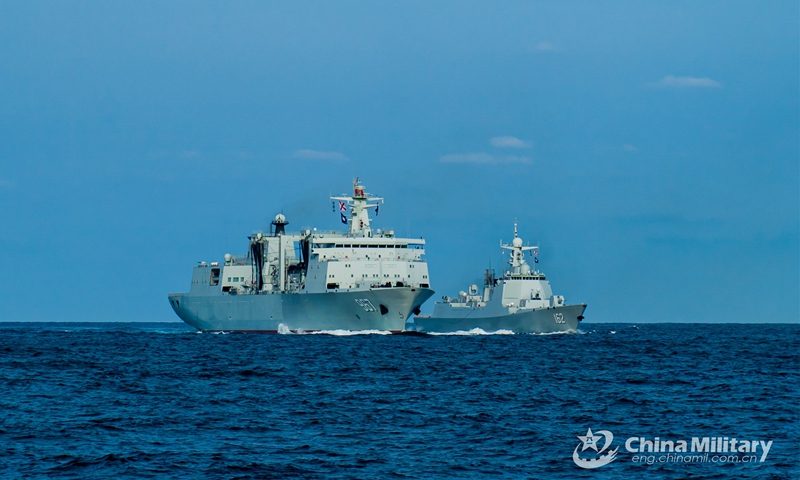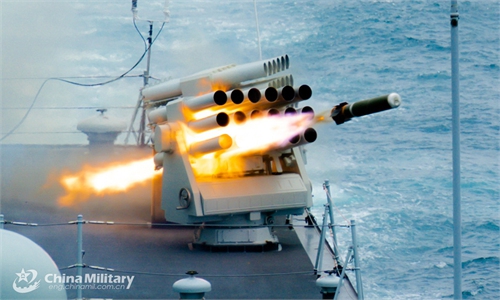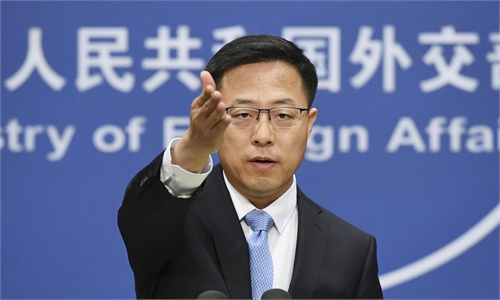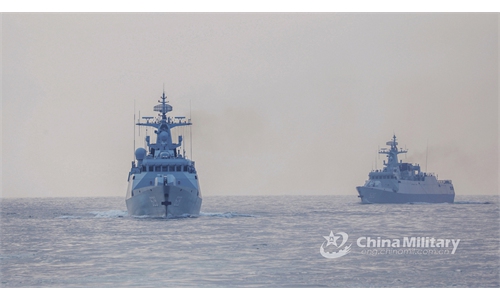South China Sea regional countries shouldn’t fall into US trap: Global Times editorial

The comprehensive supply ship Chaganhu (Hull 967) executes underway replenishment-at-sea alongside with the guided-missile destroyer Nanning (Hull 162) during a four-day-long realistic-combat training exercise in waters of the South China Sea recently. They are attached to a destroyer flotilla with the navy under the PLA Southern Theater Command. (Photo: eng.chinamil.com.cn)
July 12 is the fifth anniversary of the so-called South China Sea arbitration. US Secretary of State Antony Blinken took the chance to release a statement, accusing China of continuing "to coerce and intimidate Southeast Asian coastal states." Canada and Japan also displayed the same tone, claiming the "arbitration" is legally binding and that all parties including China must abide by it.
Blinken also stressed that "an armed attack on Philippine armed forces, public vessels, or aircraft in the South China Sea would invoke US mutual defense commitments under Article IV of the 1951 US-Philippines Mutual Defense Treaty."
In recent years, the South China Sea region has remained relatively stable. The will and ability of China and its neighboring countries to manage differences is increasing. There is no sign that new crises could emerge in the region. As for the fifth anniversary of the so-called arbitration, regional countries did not raise it in a high-profile manner on the day, and the main clamor came from the countries that are located outside of the region - the US, Canada and Japan.
Meanwhile, a US guided-missile destroyer trespassed into China's territorial waters near the Xisha Islands in the South China Sea, and was expelled and protested by the Chinese side.
The US moves to rally its allies are obviously aimed at destabilizing the South China Sea and inciting regional countries to provoke China in a hard-line manner. We call on regional countries to keep alert to the malicious intentions of external forces like the US. They should not fail to recognize the US rhetoric over claims of protection and should not act as tools for the US to play up rivalries in the South China Sea.
The so-called South China Sea arbitration was unilaterally proposed by the previous Philippine government, and China has neither accepted nor recognized it. The South China Sea dispute can be resolved only by countries in the region through peaceful negotiations, and forces outside the region have no right to interfere. The current negotiations and consultations around the Code of Conduct (COC) for the South China Sea have already yielded some results, and the process is a reliable way to stabilize the situation in the South China Sea in the long term.
In Washington's calculation, it wanted to achieve the so-called arbitration results, based on which the US has lured the Philippines and other countries to have a conflict with China. Moreover, some countries like the US and Japan started to interfere in regional affairs and tried to stir them up. Since then, the South China Sea region has been in chaos. China and other regional countries have suffered losses. The regional economy has lost momentum, while the US reaps the strategic benefits of containing China's development.
The "South China Sea arbitration" seemed to have given the Philippines a sweet watermelon, but actually it was a mine - Washington was pushing the Philippines or Vietnam to conduct a suicide bomb attack against China, a move that would serve only US interests. The Duterte administration has seen through the US plot. It has held on to friendly cooperation with China in the past five years and downplayed maritime disputes, which has disappointed the US. As the election in the Philippines is coming the next year, Washington once again wishes for a clash between Manila and Beijing.
The South China Sea is faced with two future possibilities. One is long-term peace and stability in the region through the implementation of the COC in the South China Sea with the main theme of economic cooperation between relevant countries and China becoming more and more powerful, and the strategy of the US and Japan turning into a fruitless attempt.
The other is that regional countries are motivated by external conflict and confrontation, with interference from external countries. As a result, this region will become the most prominent center of geopolitical shock in the world.
China will join hands with countries within the region and try its best to smash the US intention of destabilizing the region. To this end, we will not only reinforce communication and cooperation with regional countries and ASEAN, but also continue to build our deterrent capabilities against the US and its allies outside the region. We despise the threats issued by Blinken. We will ensure that we have the ability to severely punish the aggression of the US military under extreme circumstances. China's strong strike capabilities, including land-based conventional missiles, are prepared to deter the US and its allies outside the region from militarily interfering in the South China Sea issue.
China is the biggest peace defender in the South China Sea while the US is the biggest instigator of tension. The US poses a fundamental threat to peace and stability in the region. We expect all countries within the region to keep their eyes open. We also advise opportunists outside the region who want to play geopolitical games in the South China Sea be less arrogant and be more restrained and cautious.



